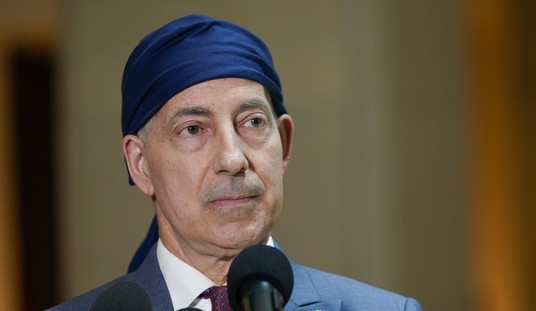In 2015, the New York Times editorial board is more concerned with the investigative techniques of pro-life activists with a hidden camera than with abortionists crushing the skulls of fetuses and harvesting their organs. Moral clarity has been wanting before at the Grey Lady, most embarrassingly perhaps in their relentless attack on President Ronald Reagan’s characterization of the Soviet Union as an “Evil Empire.”
Rewind to 1906.
Back then, all of New York was buzzing about an exhibit in the Bronx: a black man named Ota Benga could be seen living in a cage with orangutans. Behind bars at the “monkey house,” the black man and an “orangutan frolicked together, hugging and wrestling and playing tricks on each other.” The crowd loved it.
Just as in 2015, the New York Times skillfully dehumanized the victim on their editorial pages and defended the controversial practice.
My good friend Joshua Rogers has a piece today describing the penchant for moral backwardness at the Times. Giving no quarter, Rogers reminds readers that it wasn’t just the mood of the era that it was alright to exhibit caged Africans living with monkeys.
No bother at the editorial board at the Times:
Not feeling particularly vehement excitement ourselves over the exhibition of an African “pigmy” in the Primate House of the Zoological Park, we do not quite understand all the emotion which others are expressing in the matter. … As for Benga himself, he is probably enjoying himself as well as he could anywhere in his country, and it is absurd to make moan over the imagined humiliation and degradation he is suffering.
Yes, absurd to make moan then, and absurd to make moan now. The Times is nothing if not reliably amoral.
Christians and black ministers protested the exhibit of a caged Ota Benga cavorting with monkeys. Sound familiar?
Rogers holds out hope that the Times may eventually come around to the enlightened view that their defense of Planned Parenthood’s fetal holocaust was wrong.
Like their predecessors, the members of the New York Times editorial board do “not quite understand all the emotion which others are expressing in the matter.” We can only hope that maybe they will 100 years from now.
I’m not so optimistic. Abortion at all costs has grown into a theology among many. When the latest revelations about Planned Parenthood trigger criticism of the messengers and not of the gruesome behavior, I’m afraid that their wicked psychosis will stifle any such evolution.










Join the conversation as a VIP Member